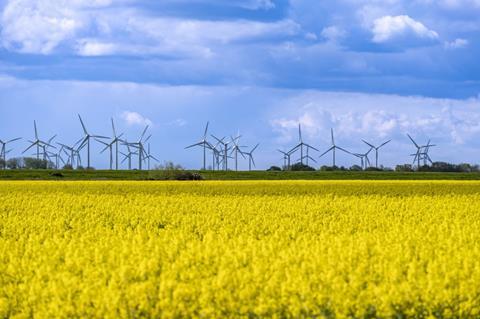Assets under management (AUM) of the 100 largest infrastructure investment managers have risen to €2.2trn – from €1.98trn last year – according to the latest IPE Real Assets ranking. The industry is consolidating as well, led by the ongoing merger of BlackRock and Global Infrastructure Partners, which – based on current figures – would create a giant with more than €150bn in infrastructure AUM.

Both trends are underpinned by a number of factors, but a clear one is the central role the infrastructure asset class has to play within both the global energy transition and digitalisation. Mark Rudovic, principal and head of real assets at Hodes Weill, lays out the case.
We explore the rapid growth in energy transition strategies and funds, varying in size and focus, and some situated firmly within the infrastructure asset class and others overlapping with adjacent areas.
Jehangir Vevaina, CIO for renewable power at Brookfield Asset Management, says: “In practice, what we are seeing is not only a growing allocation towards traditional infrastructure but also a new and growing allocation to ‘transition’ that is separate. This is not about cannibalisation of existing allocations; it is about growth to meet the needs of asset owners.”
He continues: “Most transition funds offer the benefits of traditional infrastructure, with long-duration and inflation-protected cashflows underpinned by real assets. On top of that, these funds can help to deliver significant impact goals… a winning formula for a growing number of asset owners.”
The need for data centres and supporting digital infrastructure is another engine of growth keeping infrastructure at a high altitude. The demand-supply imbalance has been supportive of building new data centres for some time, but the widespread emergence of generative artificial intelligence (AI) has accelerated this – it is expected to take up 75% of global availability, against 33% today.
Nikodem Szumilo and Thomas Wiegelmann explain how companies are adopting AI and recognising the importance of training their staff. And this is beginning to include organisations in the real estate industry. “Some firms say that reports that used to take three weeks to write now take two days because they can support data analysis and text generation with AI,” they write.

There is, however, an inherent tension between these two trends of AI-fuelled digital growth and the energy transition. Data centres are very energy intensive and AI, which is being used freely by a growing number of people around the world to generate all sorts of outcomes – from investment reports to music and art, requires a lot of processing power. Is there a danger that, ultimately, one is working against the other?

The rule of unintended consequences can also be applied to the energy transition itself. A recent report from UBS Asset Management and Planet Tracker has highlighted the negative impact that investment in the energy transition could have on nature and biodiversity if not managed properly.
The asset manager and not-for-profit think tank argue that the “nexus between climate and nature” is complex and involves trade-offs. “If natural capital is ignored in energy transition solutions it could create investment risk for investors,” they say.
The report coincides with the EU effectively moving ahead with its Nature Restoration Law, which aims to restore at least 20% of land and sea areas by 2030, and all ecosystems in need of restoration by 2050. We explore whether this will open up opportunities for investors active in natural capital.
As we report, the UK is somewhat ahead in this area with its 2021 Environment Act, which requires developers to deliver a 10% biodiversity net gain on new projects. “The opportunity for England here is to be a really good blueprint for a number of [EU] countries to actually follow suit and incorporate mandatory biodiversity net gain as part of their plans,” according to Ruth Murray, investment director at Gresham House.
But while the UK is arguably leading the way on nature restoration, the country is not performing so well when it comes to governing its water infrastructure. The country goes to the polls on 4 July and the new government will have to deal with an ailing system that goes beyond Thames Water, the company at the centre of the crisis that has debts of more than £18bn and prompts speculation over the prospect of renationalisation.
























